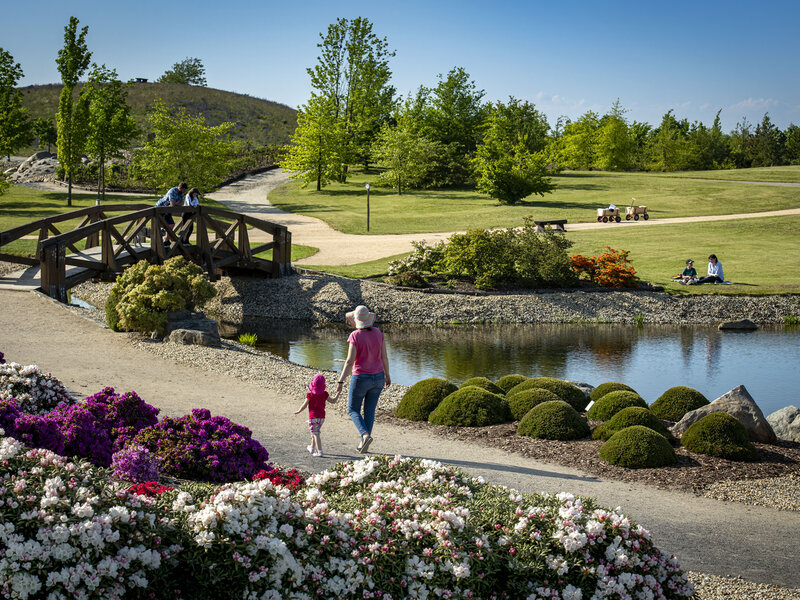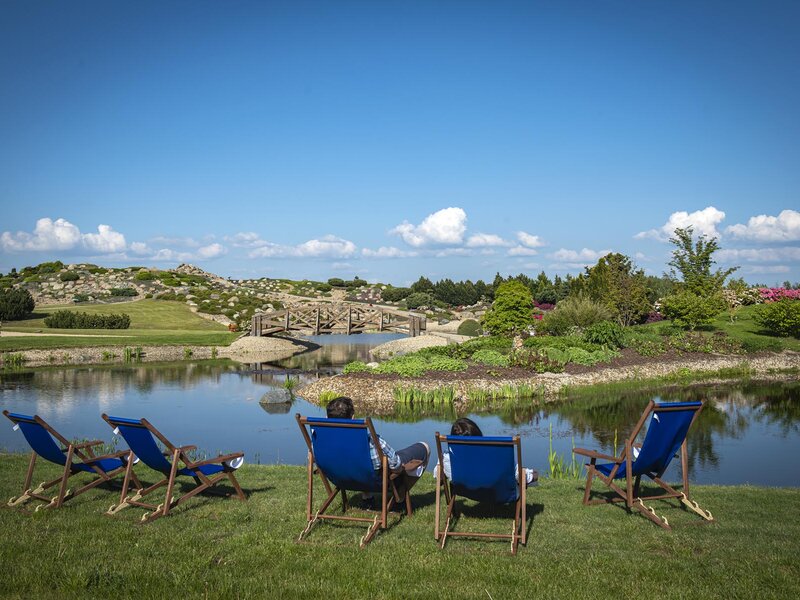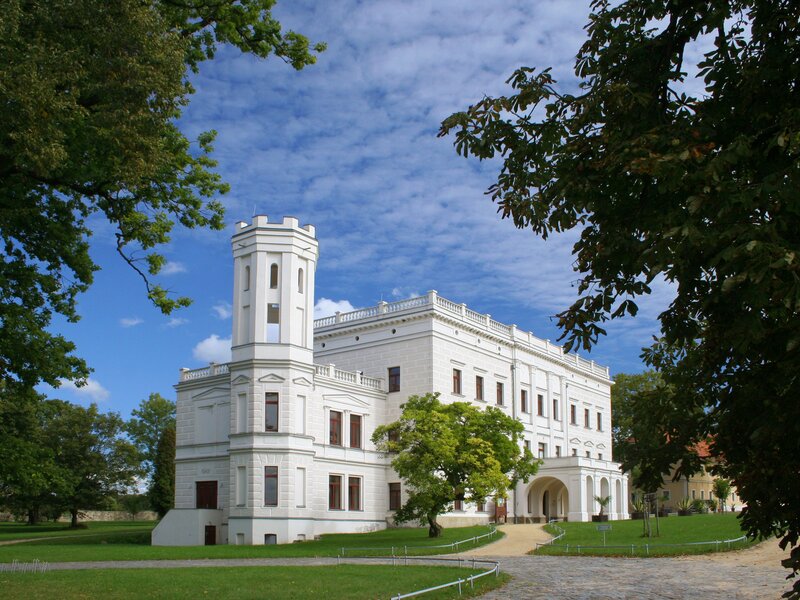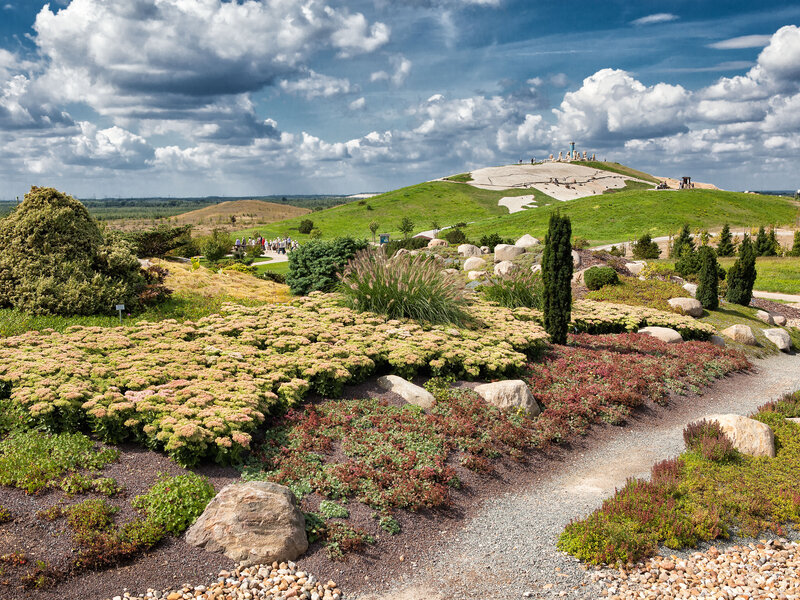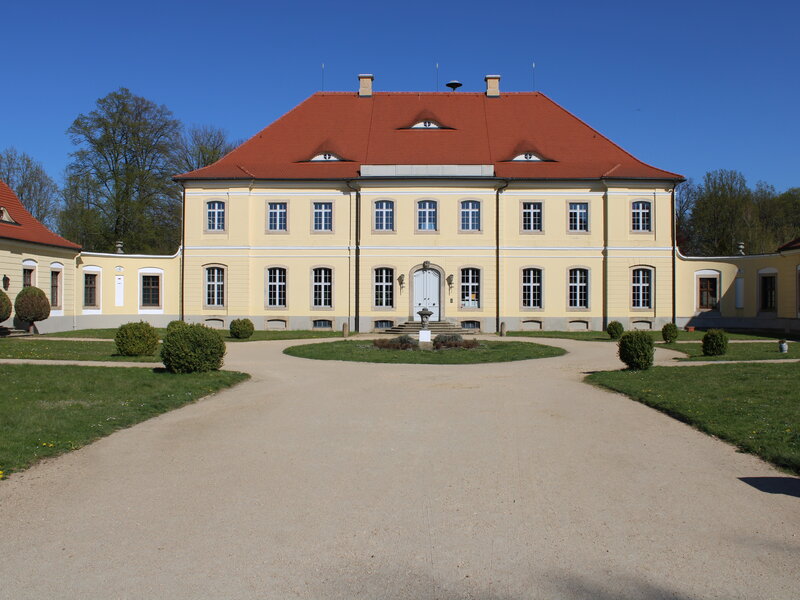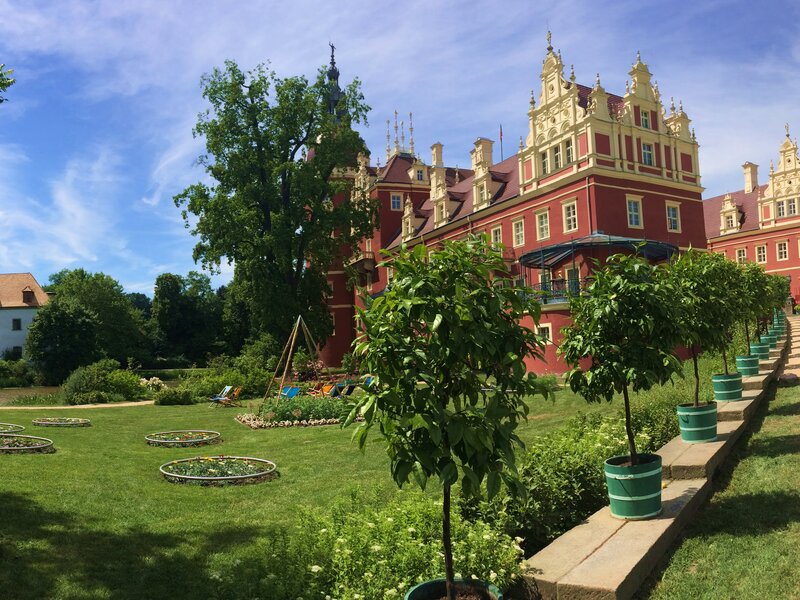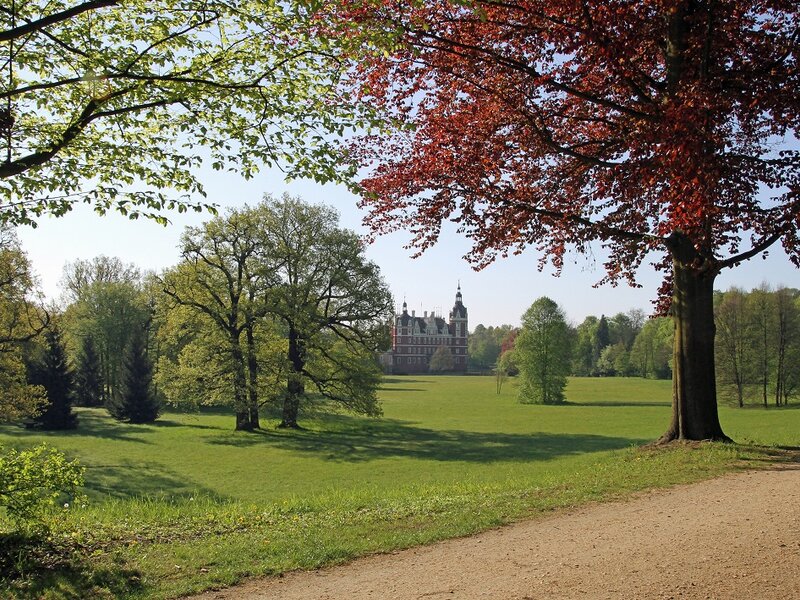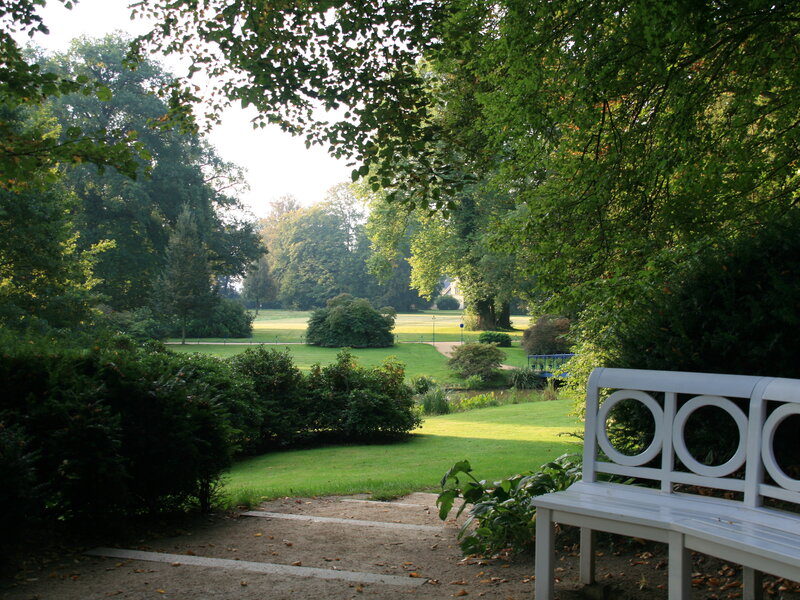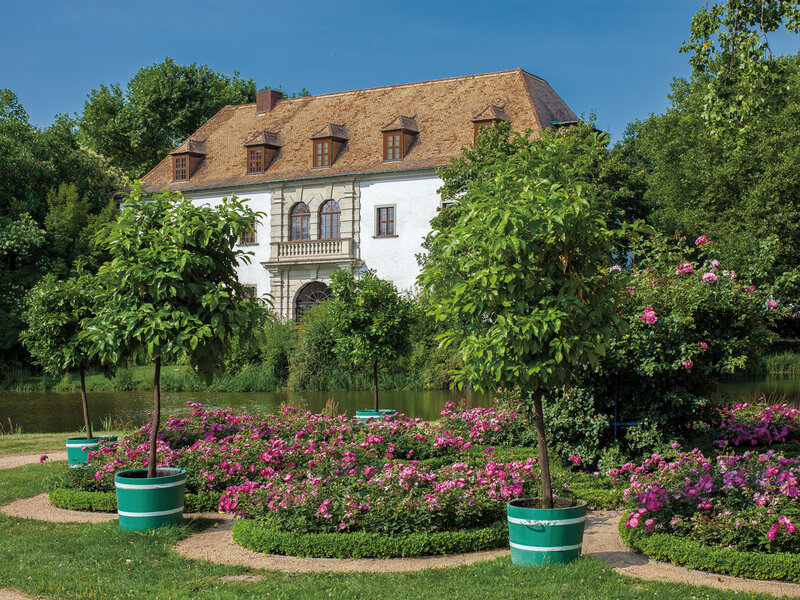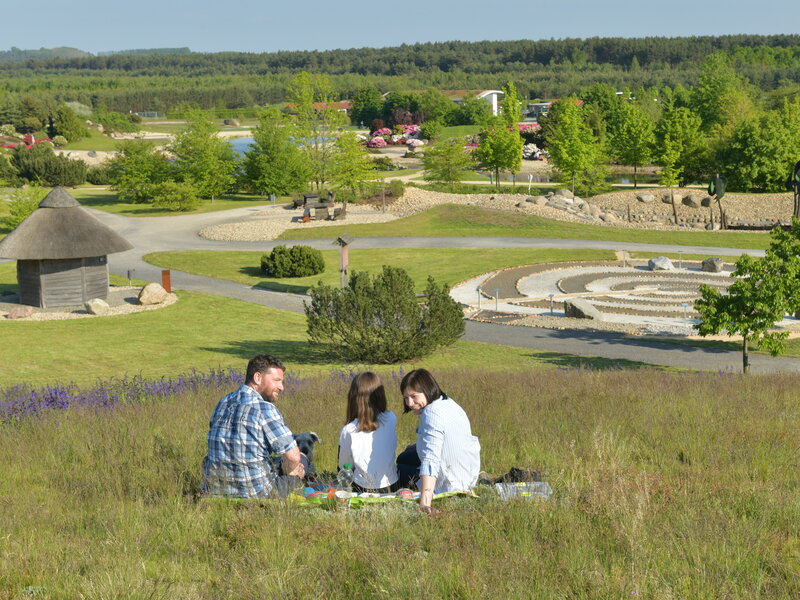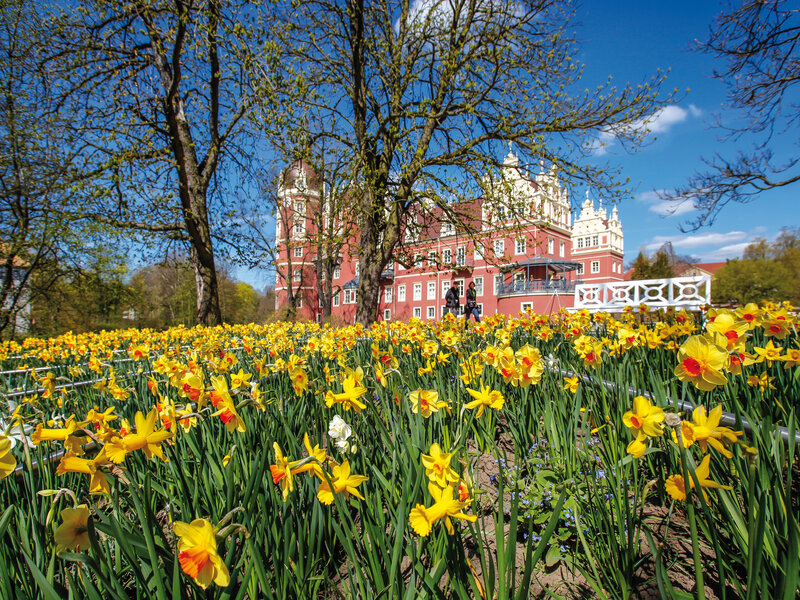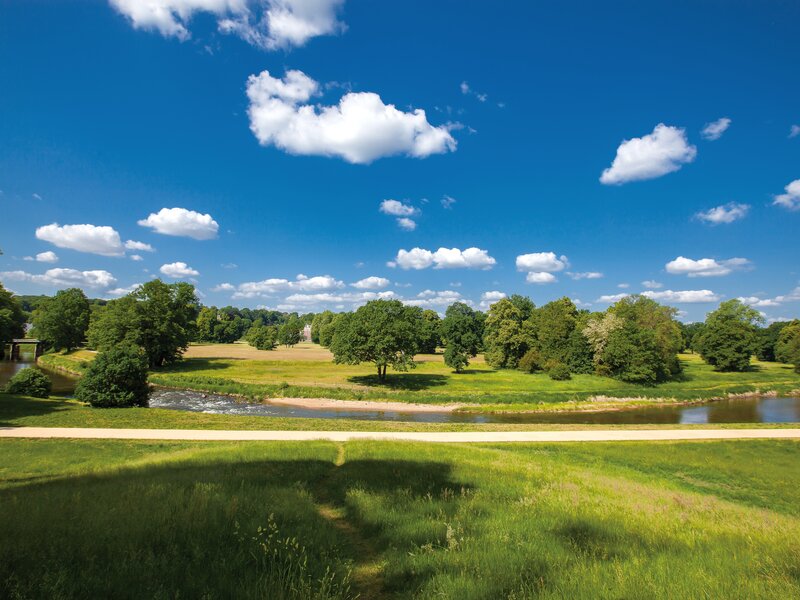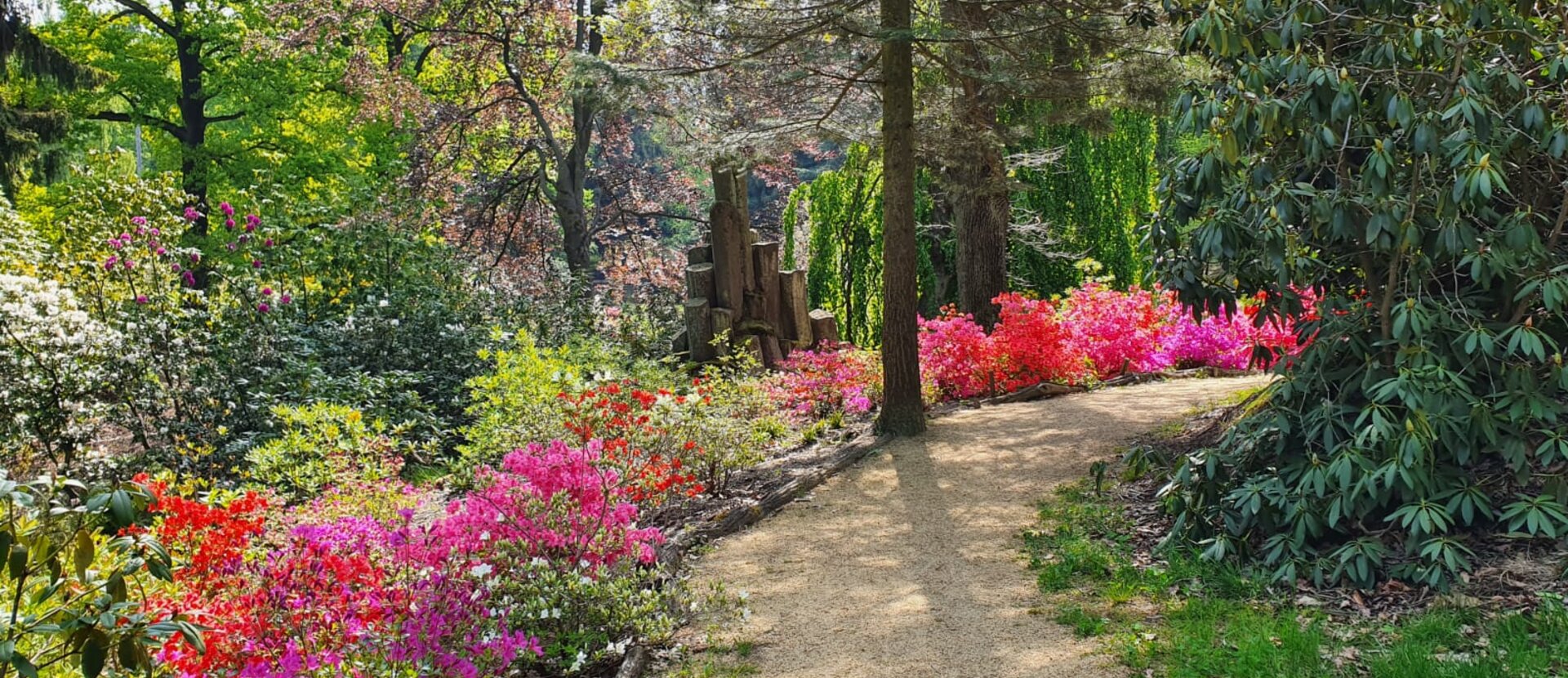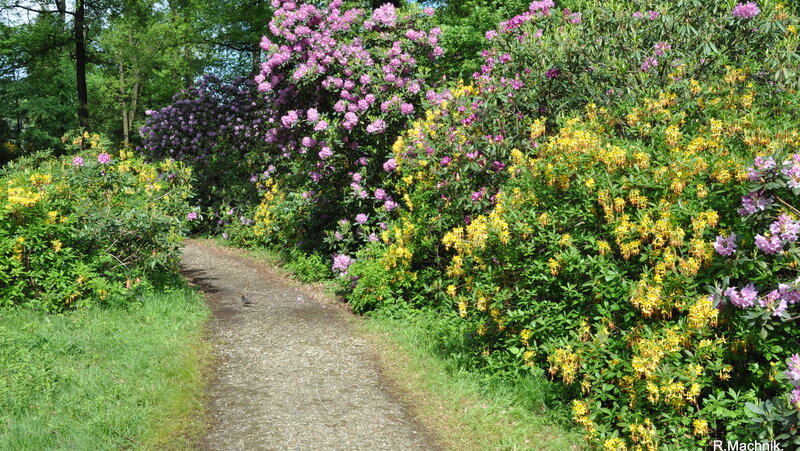From legendary bridges to turquoise-blue lakes
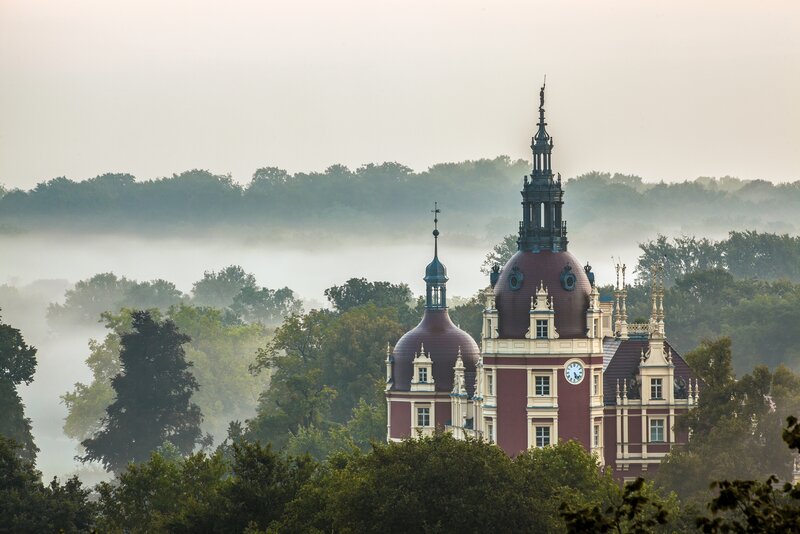
UNESCO World Heritage Muskauer Park
Hermann Fürst von Pückler-Muskau created the unique, world-famous landscape park between 1815 and 1845. The English-style park delights visitors with its impressive diagonal and distant views, large park meadows, old and rare trees and invigorating watercourses. It covers around 830 hectares and is laid out on both sides of the Neisse. In 2004, Muskauer Park was declared a UNESCO World Heritage Site.
In the New Palace, the exhibition "Pückler! Pückler? Simply unbelievable!" sheds light on the personality of the multifaceted park creator and his influence on the design ideas behind Muskauer Park, while a panoramic view from the castle tower brings the vastness and apparent boundlessness of the park to life. Two bridges over the Neisse, which were rebuilt after the war and connect the castle park with the landscaped part of the park that belongs to the Republic of Poland, allow visitors to explore the park landscape at length. Another attraction is a ride on the historic Muskau forest railroad, which runs through the Muskau Arch Geopark, another UNESCO site, and connects to the nearby Kromlau Park.
Riding stables in the region also offer informative and entertaining carriage and horse-drawn carriage rides in the park area.
In the surrounding area, numerous cycling and hiking trails connect different natural areas with a variety of sights. One of the routes connects the "That of my life", as Pückler described Muskauer Park, with Branitzer Park near Cottbus, which he later created and where the life of the self-declared park man ended.
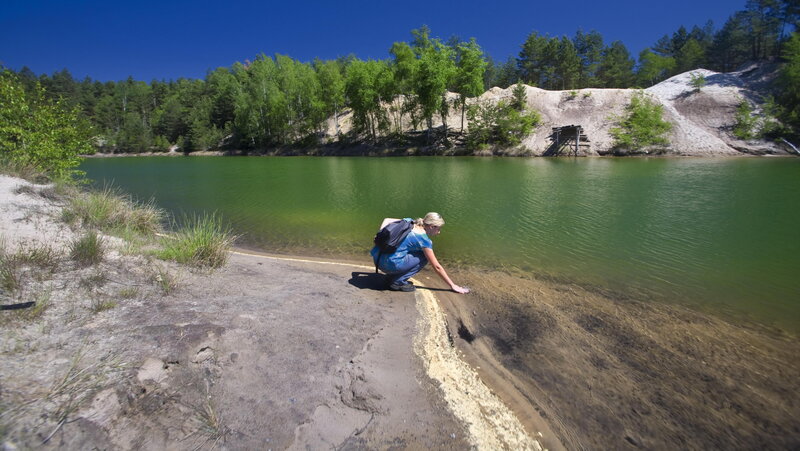
UNESCO Global Geopark Muskauer Faltenbogen / Łuk Mużakowa
Impressive view into the history of the earth
The Muskau Arch is one of the most beautifully shaped compressive moraines in Central Europe and is one of the 147 recognized UNESCO Global Geoparks worldwide.
The formation with its striking horseshoe shape was created around 340,000 years ago when a glacier carved its way through it. Today, the Muskauer Faltenbogen is a very special cultural landscape, which is characterized by the former mining industry in this region, diverse bodies of water and a densely wooded, ecologically valuable natural area.
The Muskau forest railroad is a particularly good way to experience the Geopark. Hikes or a cycle tour on the varied cycle paths also invite you to explore.
The visitor center in the Alte Ziegel Klein Kölzig provides information about the importance of geological processes and shows the development of the region, especially in the area of craft and industrial history.
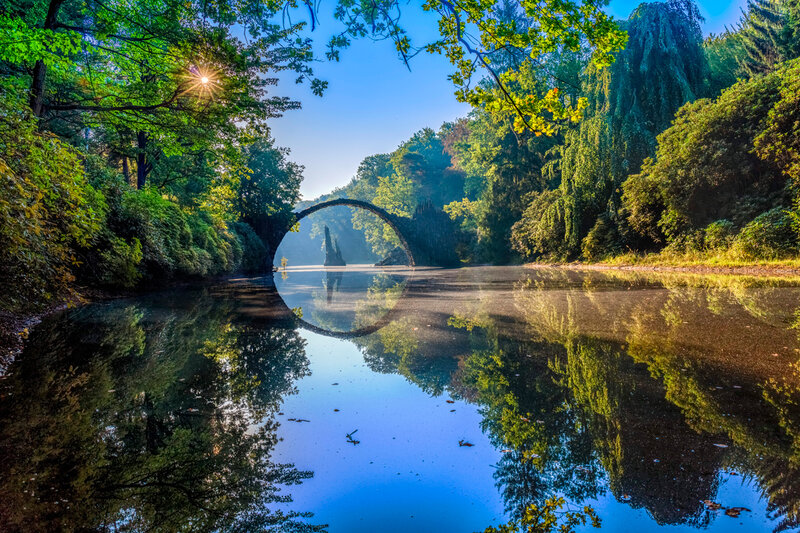
Rhododendron Park Kromlau
Nestled in the impressive landscape of the Muskauer Faltenbogen, the Kromlau Rhododendron Park is located in the middle of the "Kromlau-Gablenzer Restseengebiet" nature reserve. Kromlau attracts numerous visitors from near and far, especially when the rhododendrons and open-air azaleas are in bloom.
One of the cultural highlights in Kromlau is the park and flower festival, which takes place every year at Whitsun and attracts thousands of visitors. Those who prefer a quieter pace can simply enjoy the park away from the hustle and bustle or explore the region by bike. With numerous well-signposted themed cycle paths, cyclists will find excellent conditions in the region.
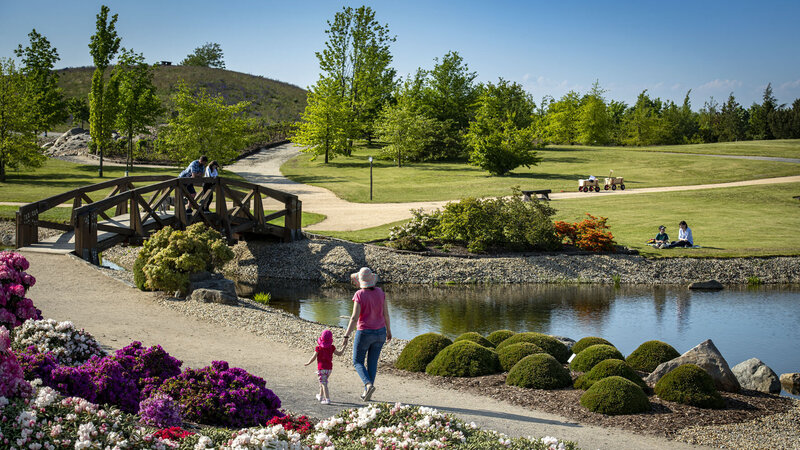
Nochten boulder park
At the beginning of the millennium, a park landscape with 7,000 boulders was created in Lusatia, Saxony, that is unique in Europe. Alpine rock garden, Irish heath or Asian garden art - the erratic boulder park offers a wide variety of landscapes and yet is unique. Over 100,000 plants can be admired in the gently shaped hilly landscape. At any time of year, they interact with the huge boulders to create a fascinating park scene.
The highlight for the youngest visitors to the park is the "Desert" playground. The adventure oasis made of wood, clay and stone is a wonderful place to romp around and relax.
The park experience begins and ends at the modern visitor center. At the entrance, you can borrow handcarts, wheelchairs or audio guides with a guided tour of the park in several languages. In the visitor center, you can explore the exhibition "Icy, huge, exciting. Adventure Ice Age". In addition to guided tours of the park, round trips are also offered. The park experience can be rounded off in the "Big Rock Snack Bar" with regional dishes, snacks or coffee and cake.
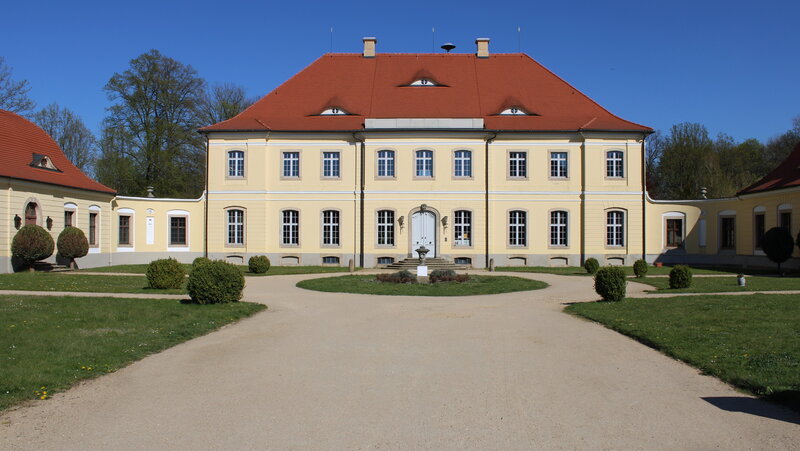
Königshain Castle
The Königshain castle complex is a special historical treasure in Upper Lusatia. The oldest part of the castle complex is the Steinstock, a Gothic residential tower. Right next to it is the Renaissance castle, next to which the remains of a moat can still be seen. The stately castle complex was built in the late Baroque period in a restrained French style by Carl Adolph Gottlob von Schachmann. The associated park is Baroque in style, but already hints at the transition to landscape gardens with English influence.
Today, Königshain Castle is home to an art and cultural center that hosts temporary exhibitions by contemporary artists. Königshain Castle is always worth a visit!
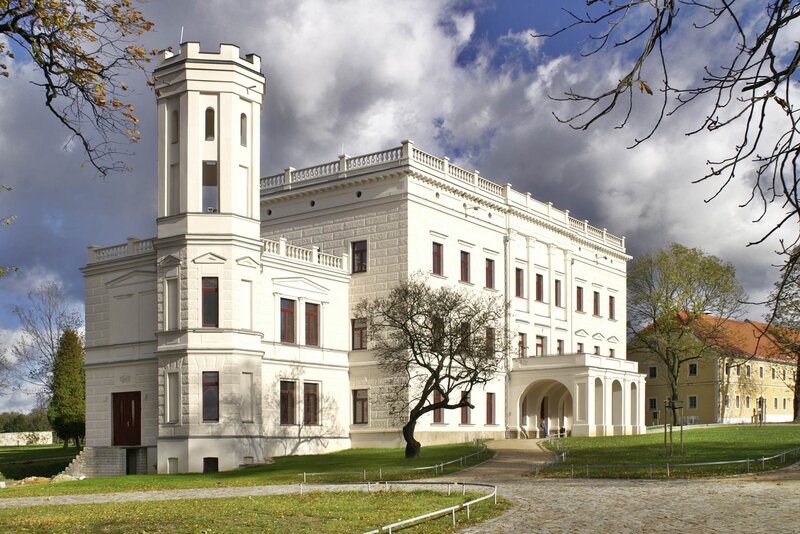
Krobnitz Castle
Find a piece of Prussia in Saxony
Surrounded by a landscaped park, the imposing building of Krobnitz Castle rises up. The baroque manor house, built around the middle of the 18th century by the von Üchtritz family, was acquired by the Prussian Minister of War and Field Marshal General Albrecht Theodor Emil Graf von Roon in 1873. He had it transformed into a neoclassical building by adding a mansard storey with a flat roof and balustrade. The articulated plaster façade copies the appearance of the Berlin Ministry of War. Count von Roon extended the park and created a family crypt in the rear part of the park, which was consecrated in 1876. His son Waldemar added a neo-Gothic chapel to this crypt, but it was demolished in 1980. Following the expropriation of the von Roon family after 1945, the castle fell into disrepair. In 2002, the town of Reichenbach finally began renovating the entire ensemble.
Today, the beautiful ensemble of castle, estate and park shines once again in all its glory. In addition to exhibitions in the castle, it is also worth taking a guided tour of the grounds. Regular lectures, concerts and events also attract a large number of visitors to Krobnitz.
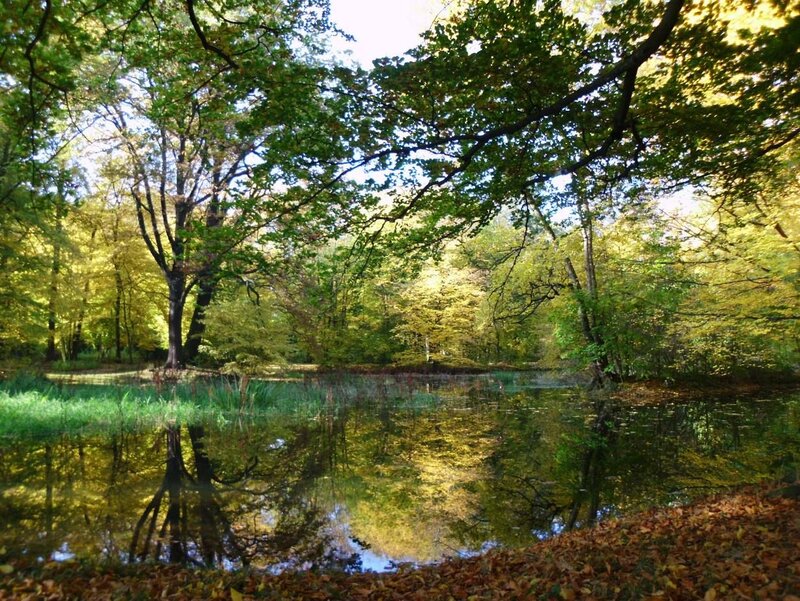
Rothenburg City Park
Rothenburg Town Park is one of the largest landscape parks in Upper Lusatia. It covers an area of around 11 hectares on the outskirts of the town of Rothenburg near the Lausitzer Neiße.
The park is said to have been redesigned for the first time around 1750 under the influence of the English landscape garden. The park was fundamentally redesigned into a landscape garden and the area was enlarged from the 1840s onwards. Wigand Adolph Freiherr von Gersdorf had the entire park redesigned or newly laid out following the example of Prince Pückler's landscape park in Muskau and the Wörlitz Park. The path system and the park pond, which still exist in large parts of the park today, date back to the park design under von Gersdorf.
In 1883, the industrial magnate Justus Friedrich Martin (von Martin from 1907) acquired the manor and the associated park. Von Martin subsequently redesigned parts of the park.
In the spring of 1945, the park was severely damaged by heavy fighting. A large part of the park was destroyed.
At the end of the 1940s, work began on buildings for cultural purposes in the southern park.
A flight of steps was later built into the slope to the north of the former manor grounds, which is now the new main entrance to the park.
Impressions
